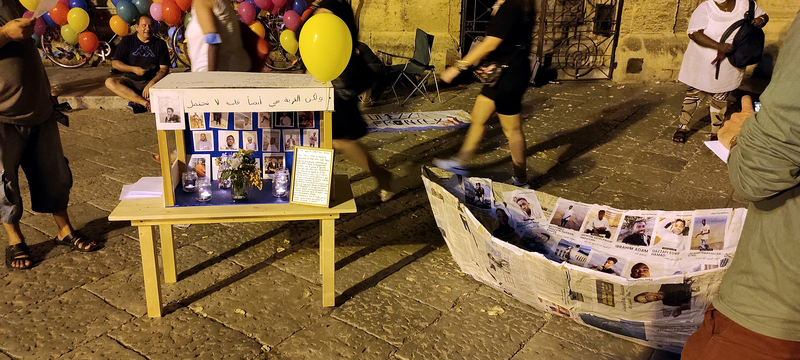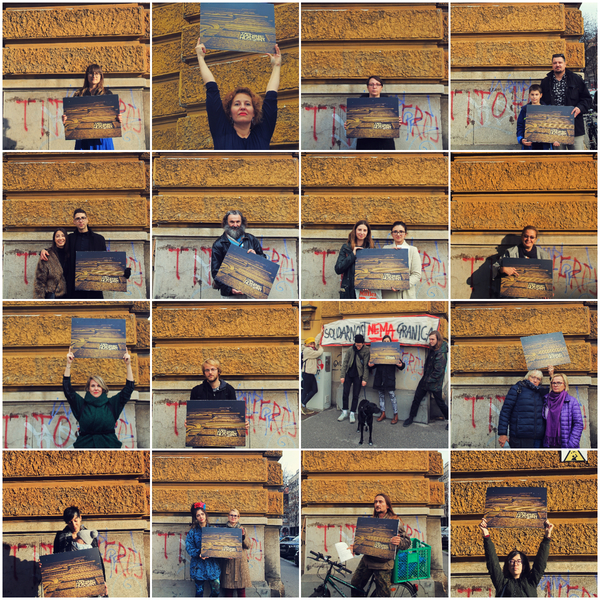Grief Activism
Grief activism, according to Maurice Stierl (2016), the author of the term, includes counter-memorialization practices dedicated to those who died at the borders that bring together different actors: activists, artists, journalists, academics, members of the wider community and families, friends and acquaintances of the deceased. Stierl speaks of grief activism as a “transformative political practice that can foster relationalities and communities in opposition to a politics of division, abandonment and necropolitical violence on which EUrope’s border regime thrives” (Stierl 2016: 174). The examples he cites and analyzes deal with activist commemorations for those who died in the Mediterranean, which, as Stierl emphasizes, in contrast to the political spectacularization and instrumentalization of border deaths, strive to create a space of sharing, togetherness and grief as part of interconnected political struggles and which imply failures and of non-recognition.

Commemoration for people who died in the Mediterranean, Palermo, 17 September 2021 Photo: Bojan Mucko
Local and transnational activist groups along the Balkan route publicly commemorate people who died at the borders in different ways: by creating and distributing obituary flyers for those who died in the Kupa river (Ljubljana, 2019), visiting graves (Črnomelj, Infokolpa, 2019), creating a digital memorial (e.g. the Memorial Page of the Transbalkan Solidarity organization), a moving memorial textile artwork (Prijelaz / The Passage) and others.

Grief activism, as a collective practice, is realized through mutual cooperations between individuals and different communities, often even in the form of participatory actions that intend to involve the general public. For instance, the second anniversary of the death of Madina Hussiny, a girl from Afghanistan who died at the end of 2017 during a pushback from Croatia to Serbia, was commemorated by an action in which passers-by, at the invitation of activists, raised a plaque model of a street sign with the title Madina Hussiny Square. The raising of the plaque was organized, as stated in the call to the action, so that activists, supporters, and everyone willing to do so could “support the request of the initiative, raise their voice against injustice and demand that the square bearing her name serve as a an everlasting reminder that no one and no nation-state, government, military force, economy or political regime has the right to determine whose life is worth living and whose is not.”

1/5/2022
Literature
Stierl, Maurice. 2016. „Contestations in Death. The role of Grief in Migration Struggles“. Citizenship Studies 20/2: 173-191.